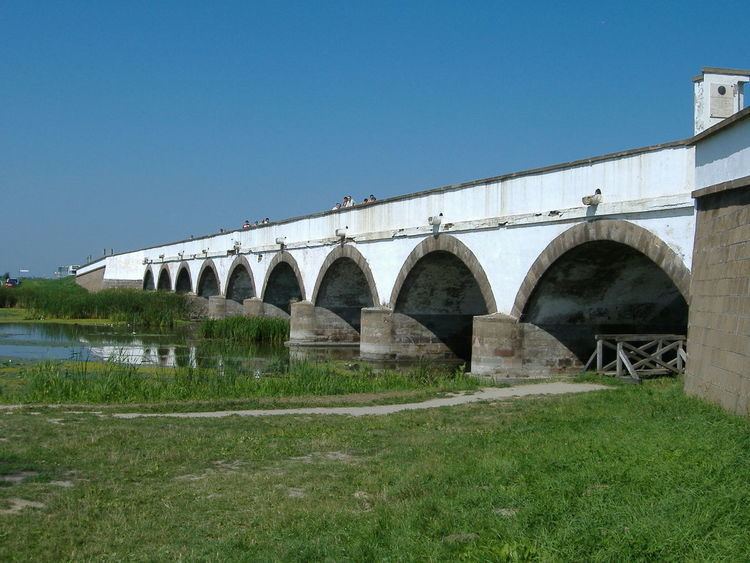Opened 1833 Bridge type Arch bridge | Total length 167 m | |
 | ||
Address Hortobágy, Petőfi tér, 4071 Hungary Similar Hortobágyi Pásztormúzeum, Hortobágy National Park, Hortobágyi Nonprofit Kft ‑ Máta, Reformed Great Church of, Lake Tisza | ||
The Nine Holed Bridge (Hungarian Kilenclyukú híd) is the most identifiable symbol of the Hortobágy National Park, Hungary's great plain. This Arch bridge is the longest road stone bridge in historic Hungary prior to 1921 when Hungary was reduced to one third of its former territory. The bridge was built between 1827 and 1833 in a Classical style.
The distance between the two abutments standing on either side of the river is 92.13 metres while the entire length of the stone bridge measures 167.3 metres. The entrance to the bridge on each side is broader, thus making the life of the herdsman easier as approaching animals being herded onto the bridge entered the funnel shaped opening of the bridge.
The predecessor of the Nine Hole Bridge was a wooden structure built in 1697 which finally no longer corresponded to requirements due to the heavy traffic and deterioration over time. Increasingly frequent repairs made maintenance more and more expensive and thus, in 1825, the nearby city of Debrecen decided to dismantle the wooden bridge and build a new stone bridge in its place. After a review of several designs, the plan of Ferenc Povolny was accepted. Construction of the new bridge began in 1827 and after its completion in 1833 the wooden bridge was dismantled.
